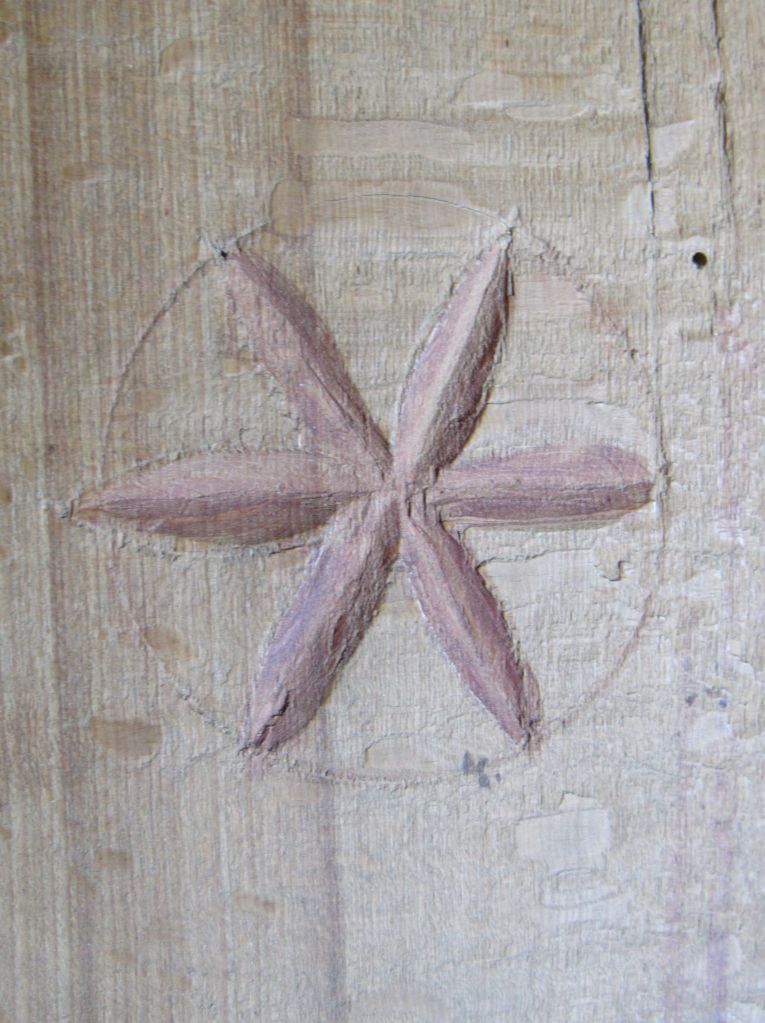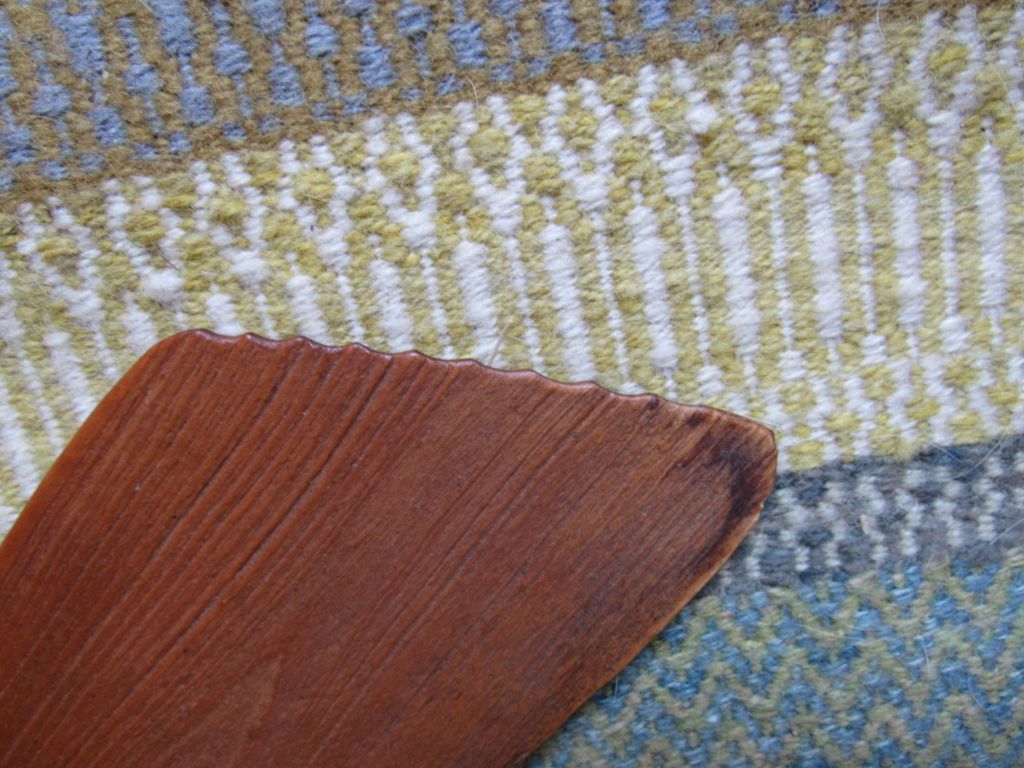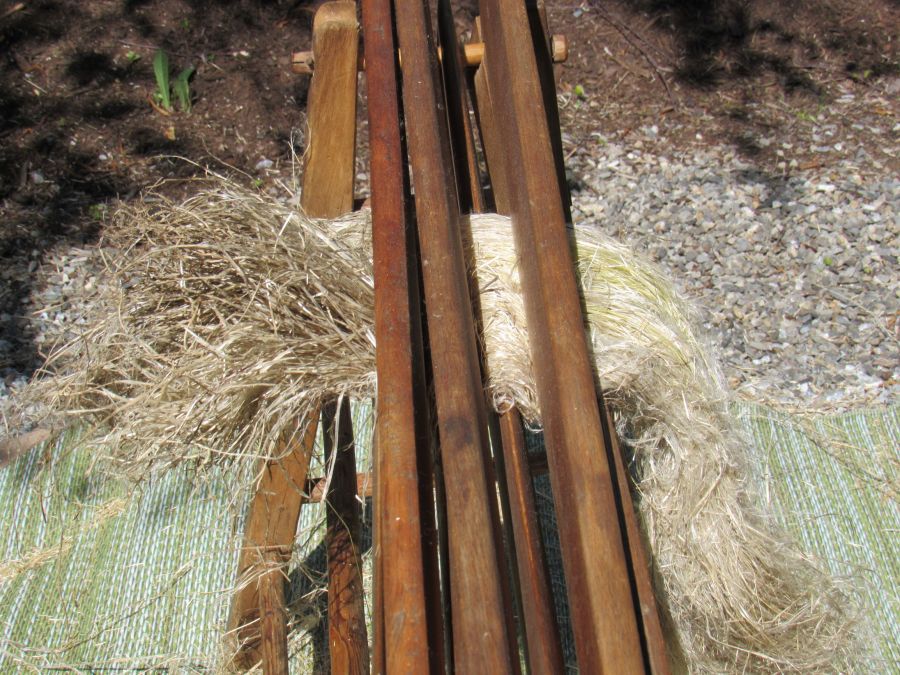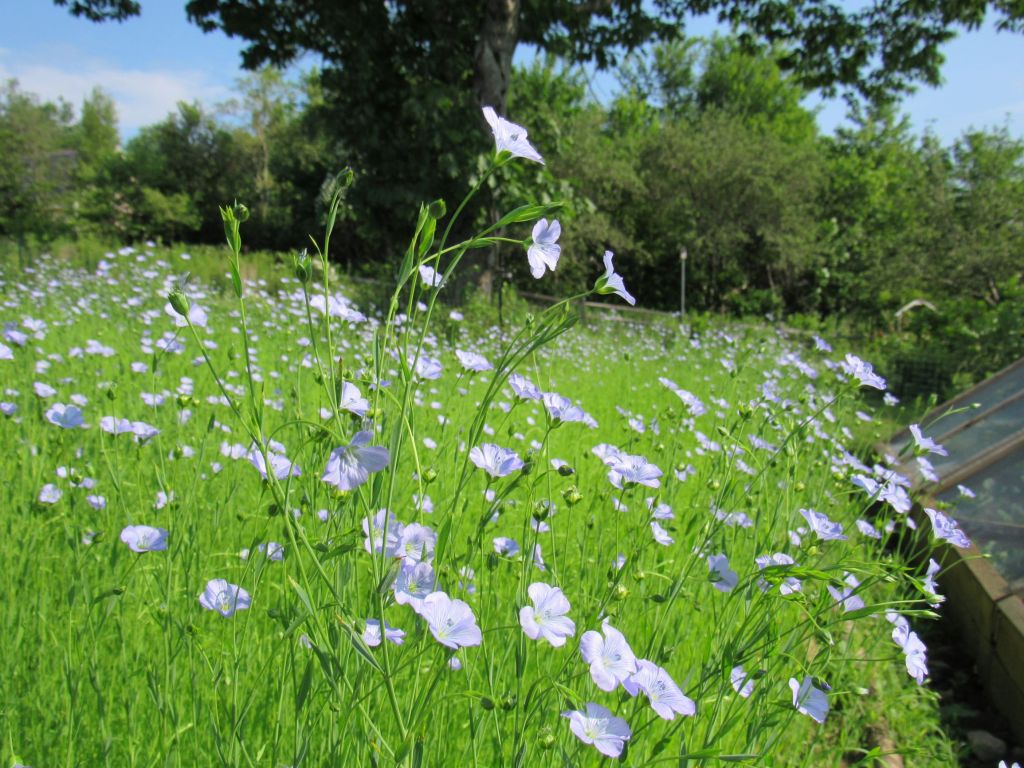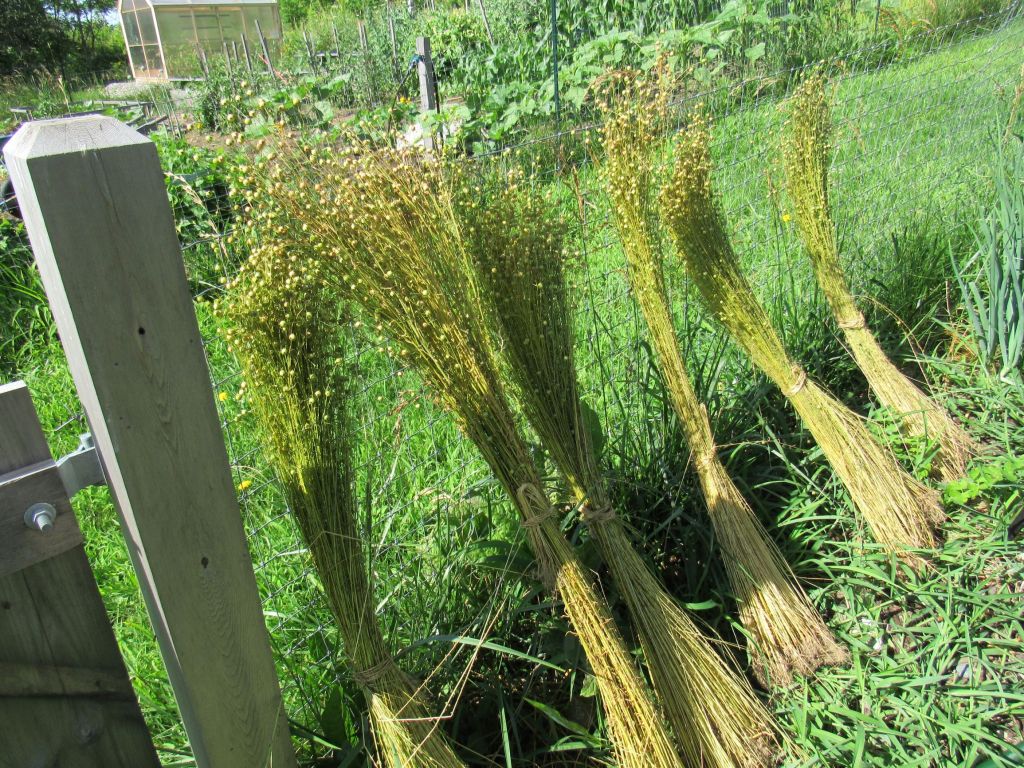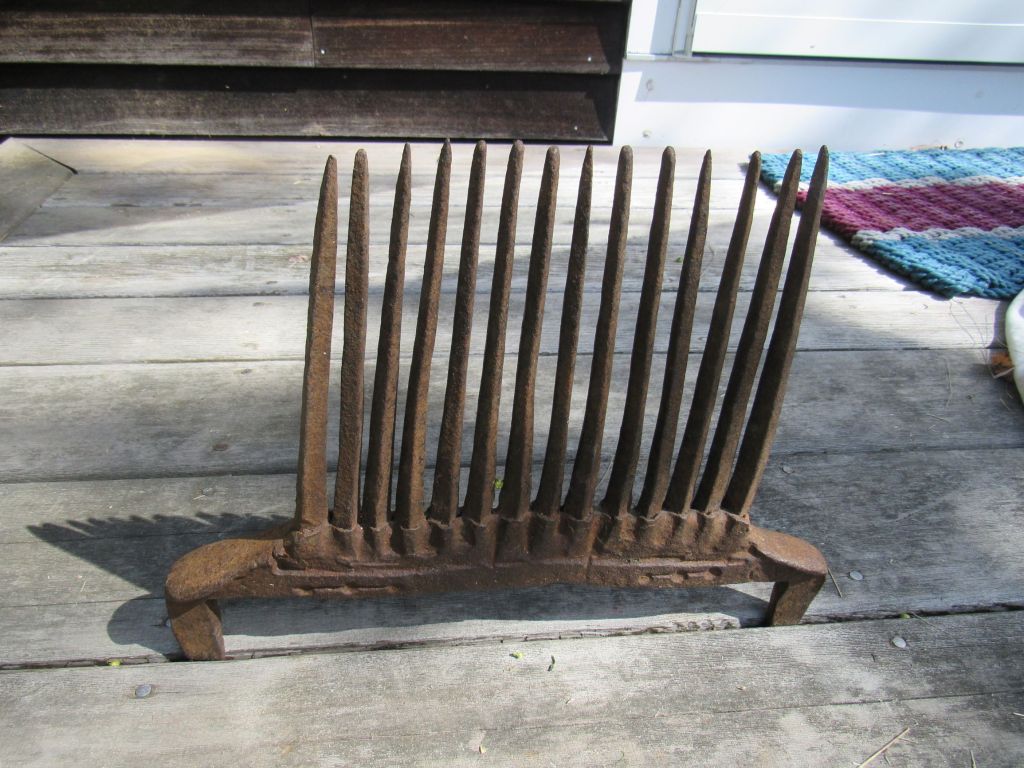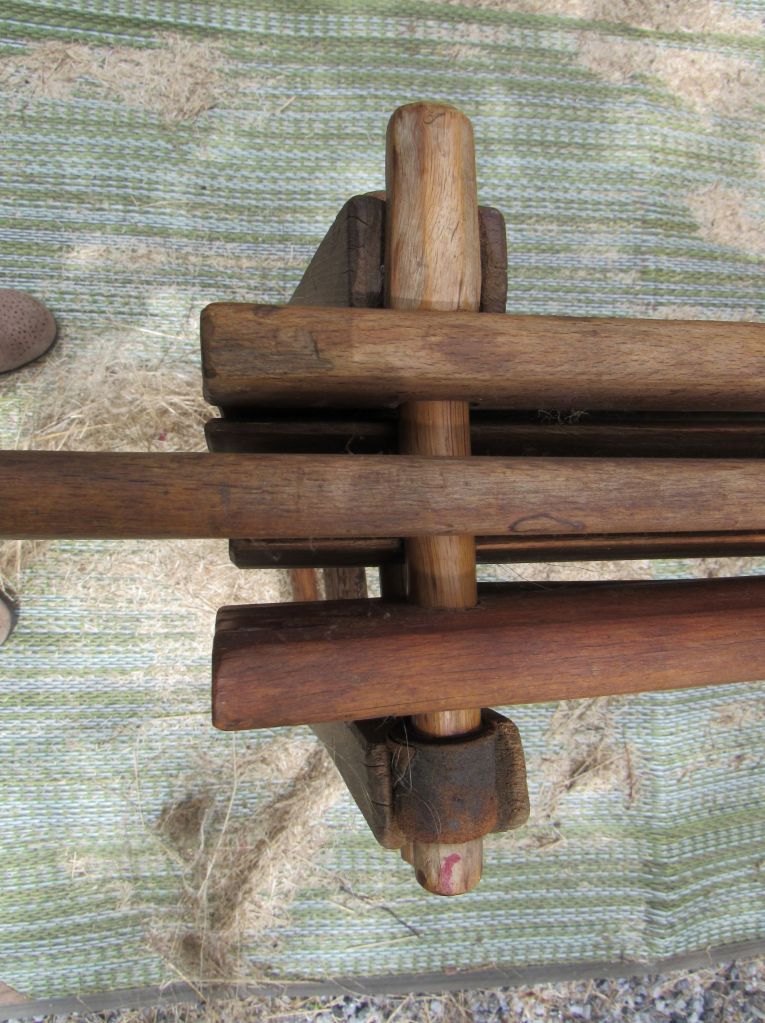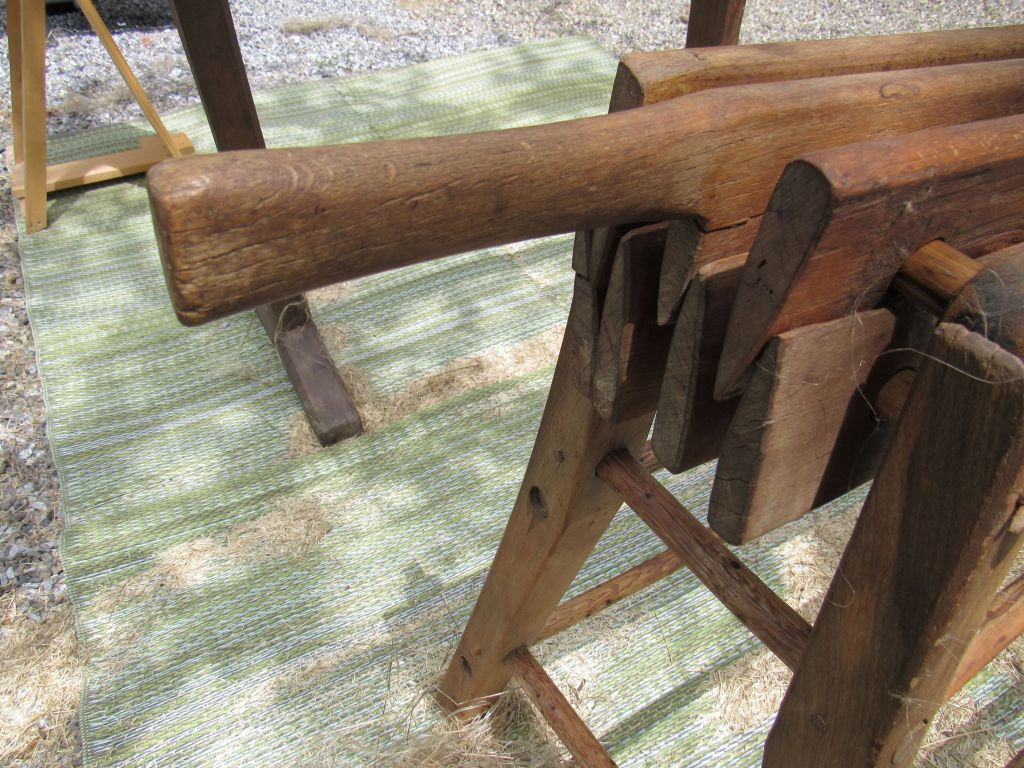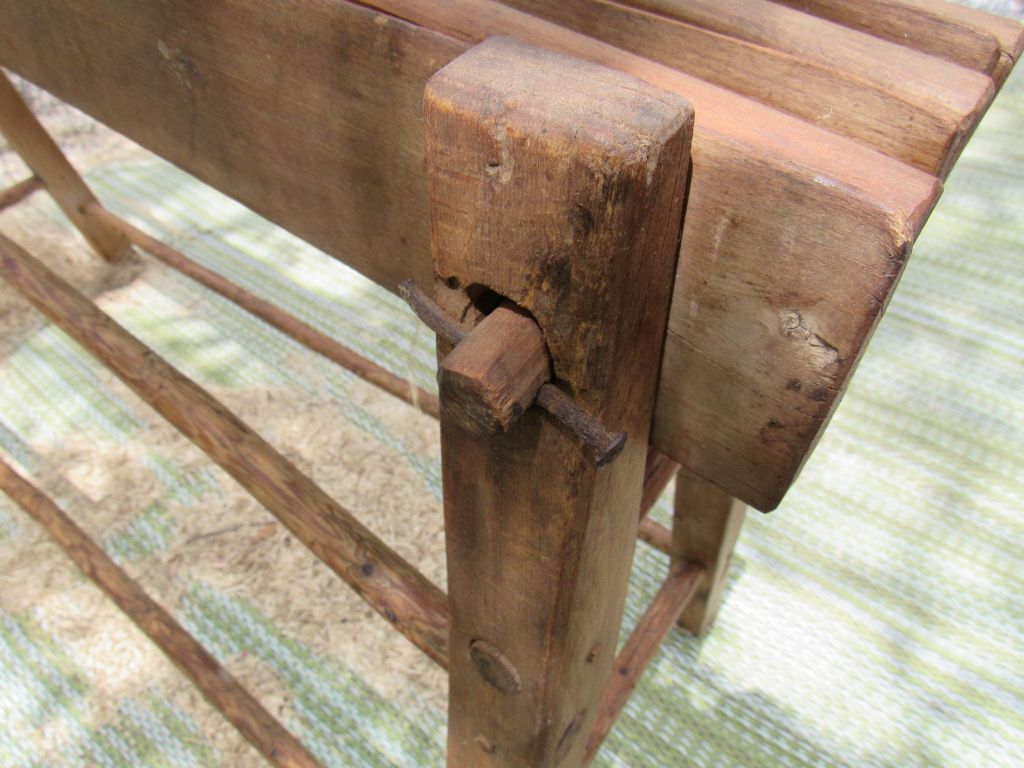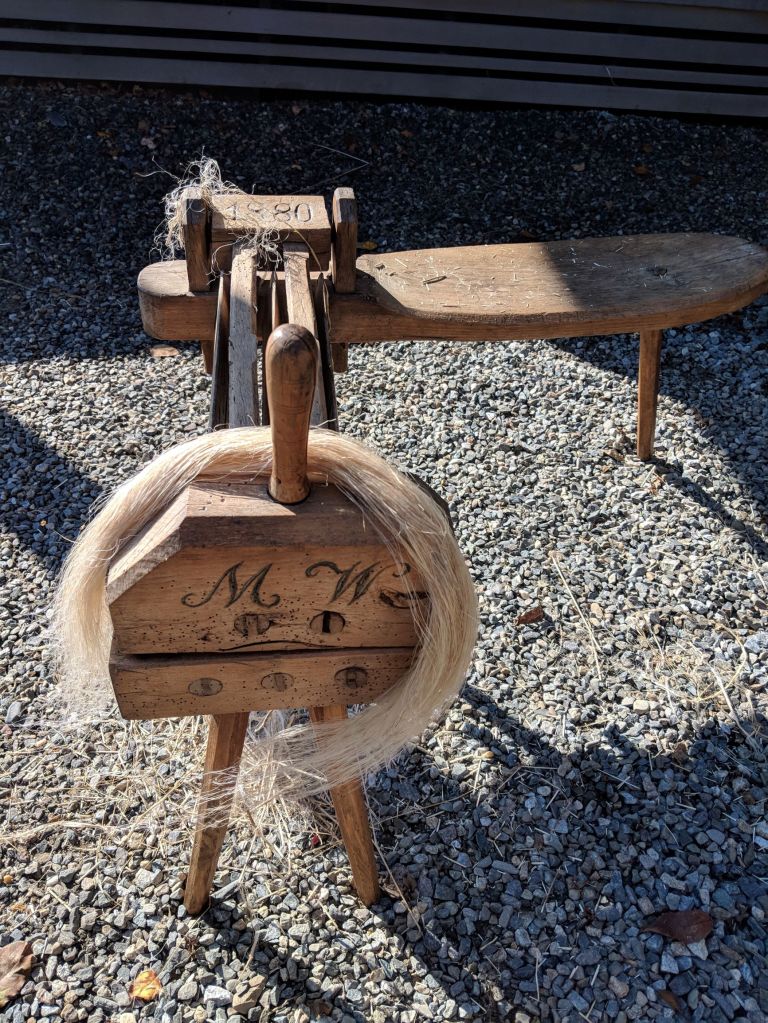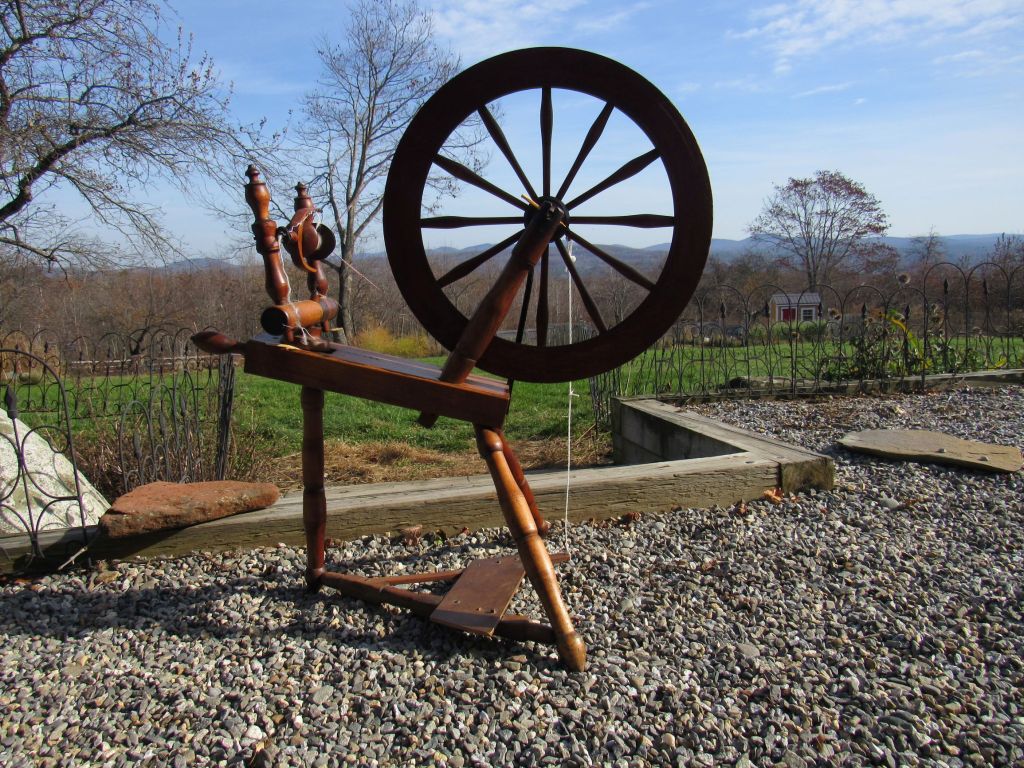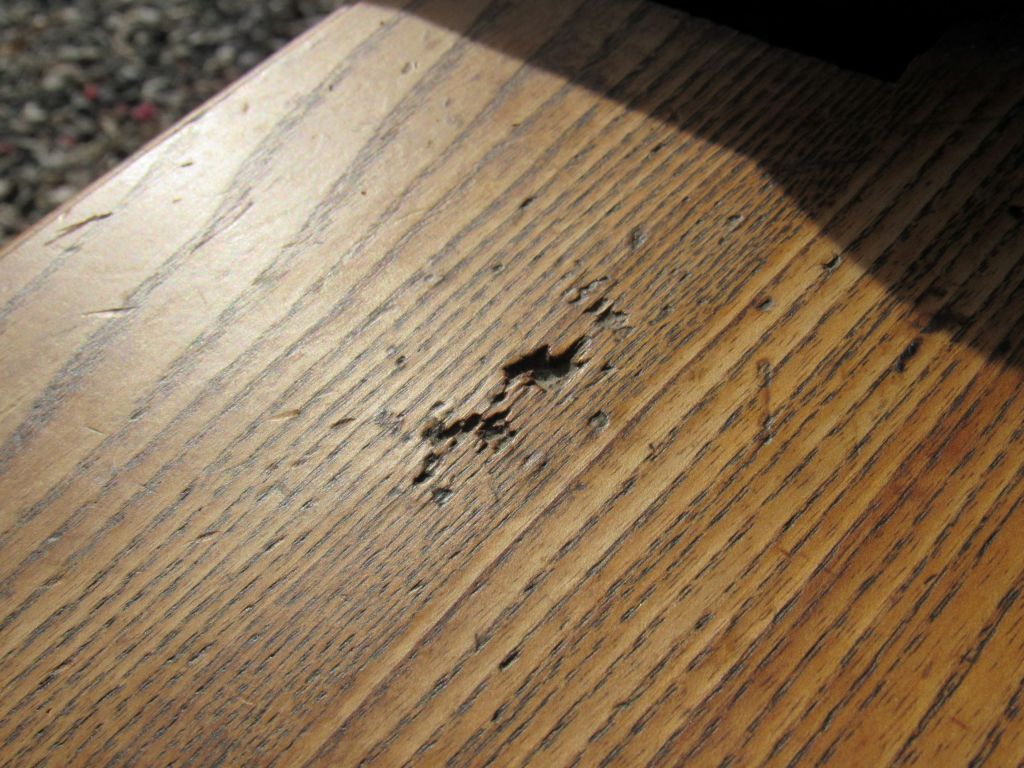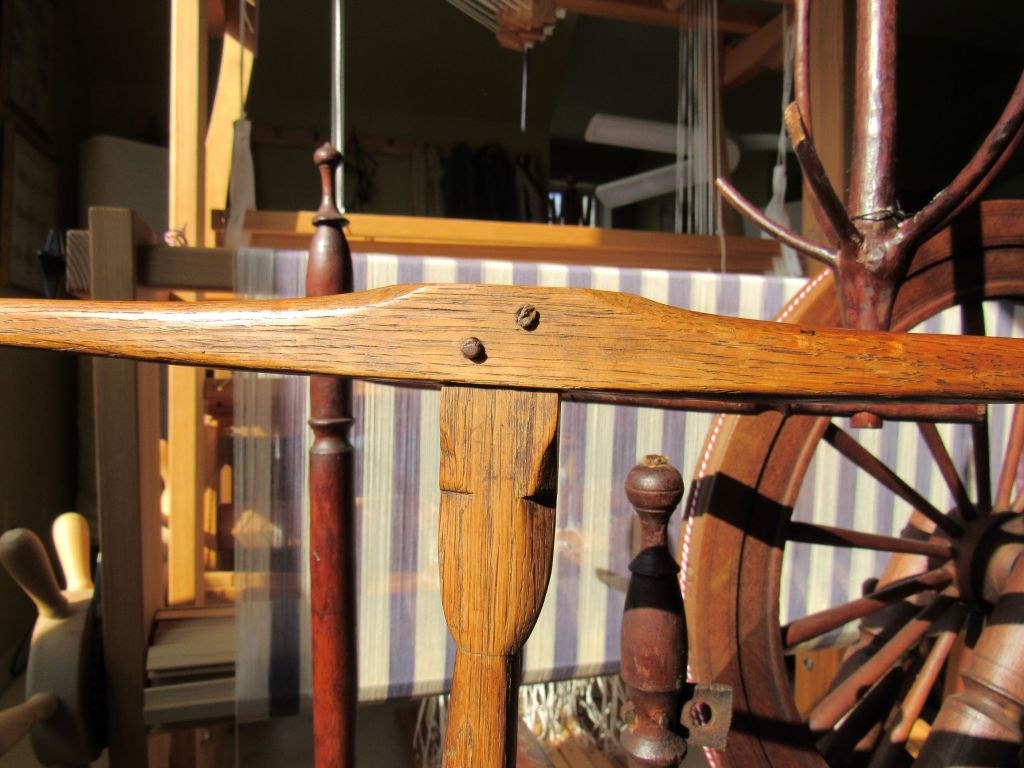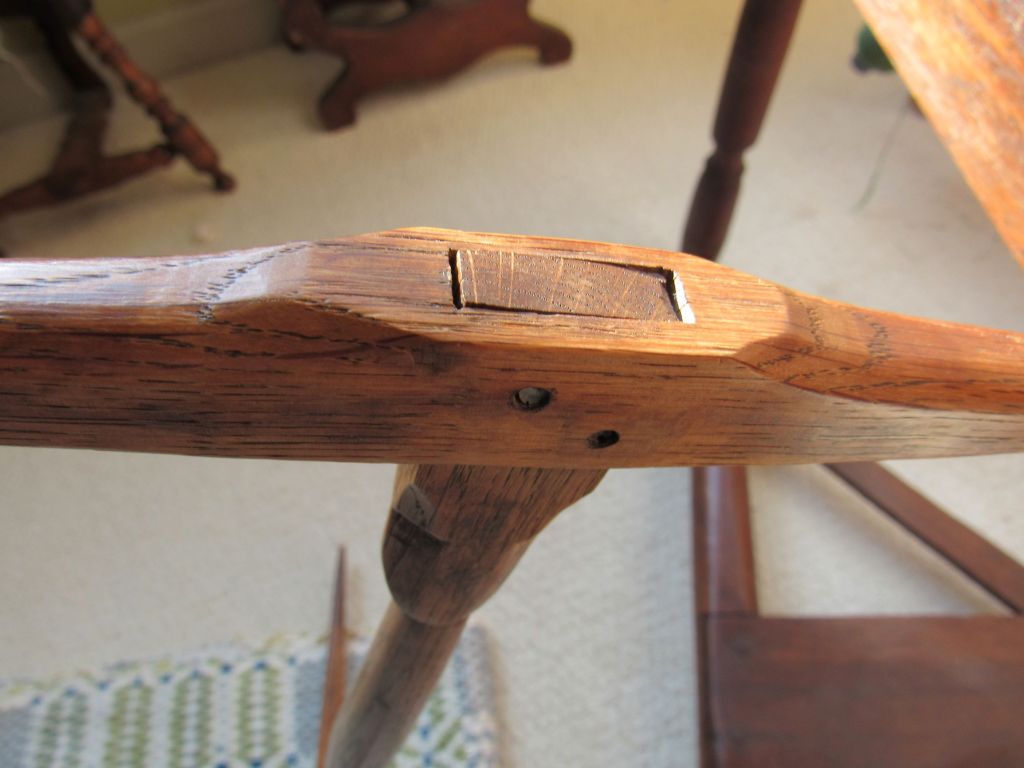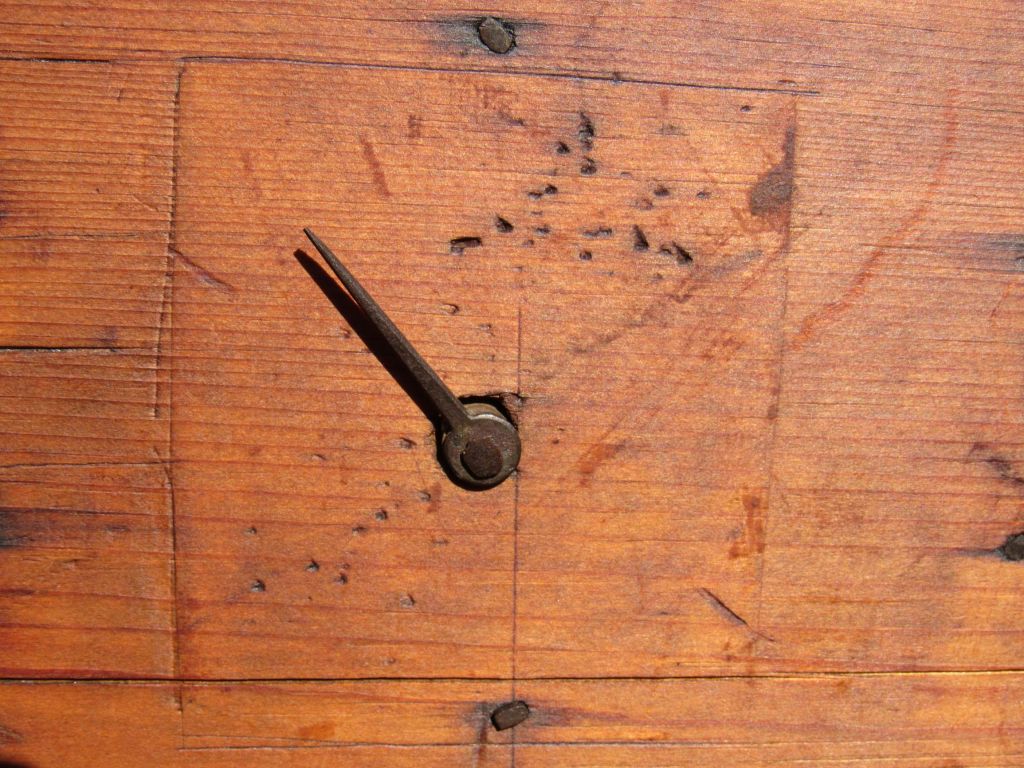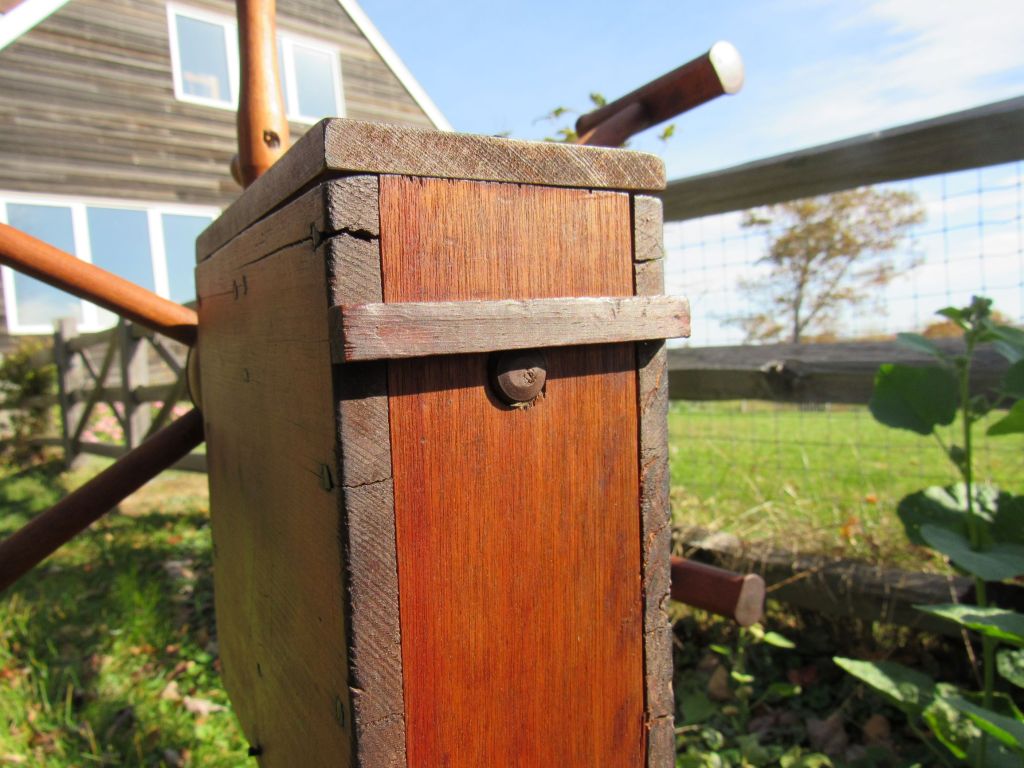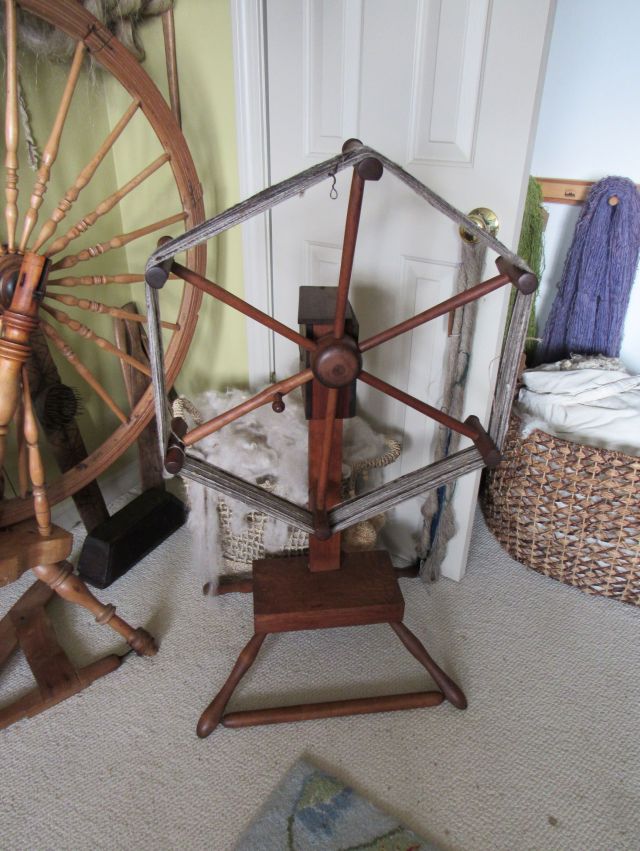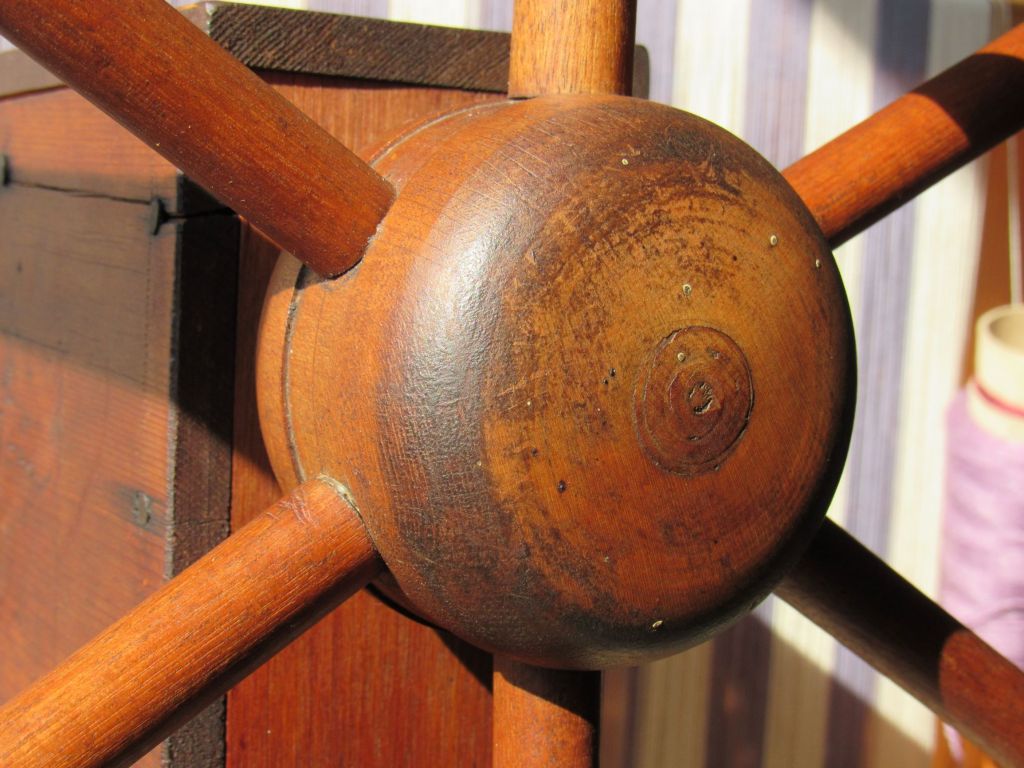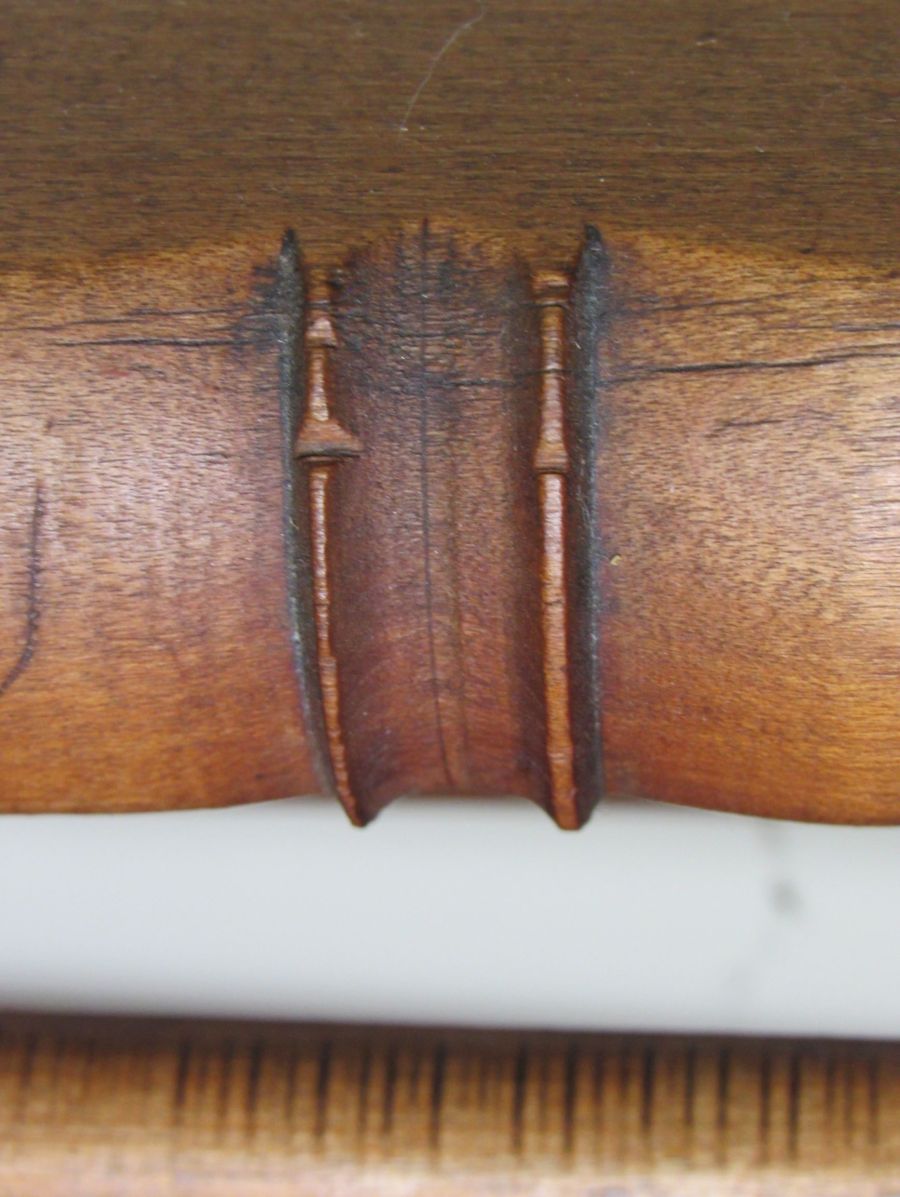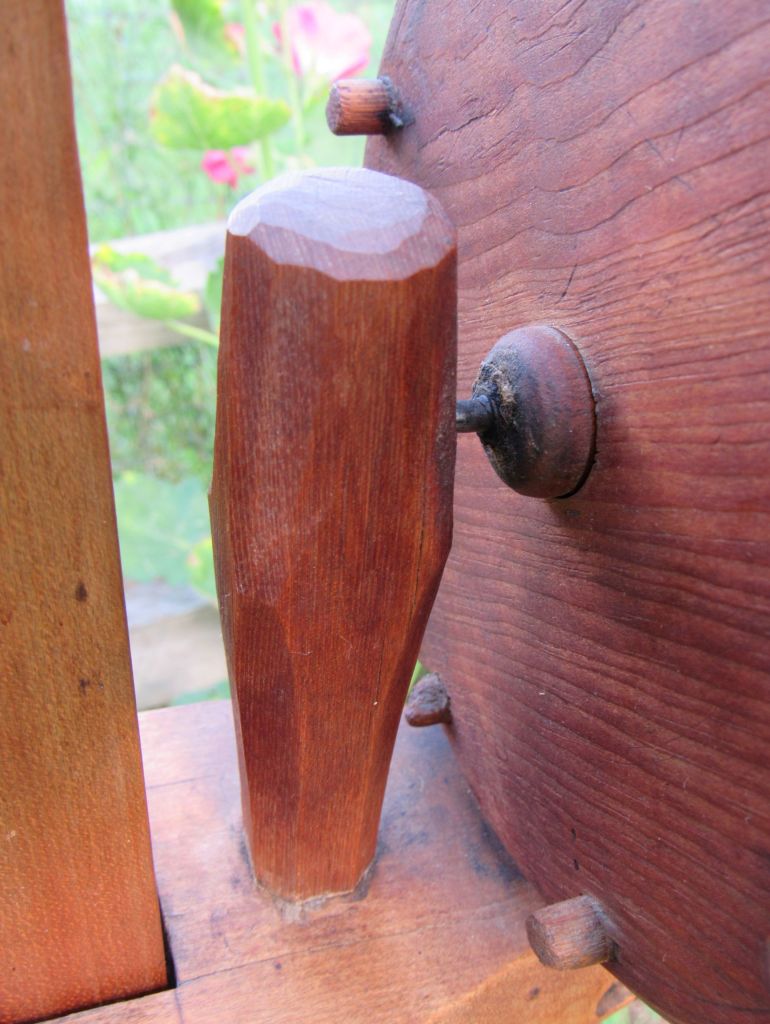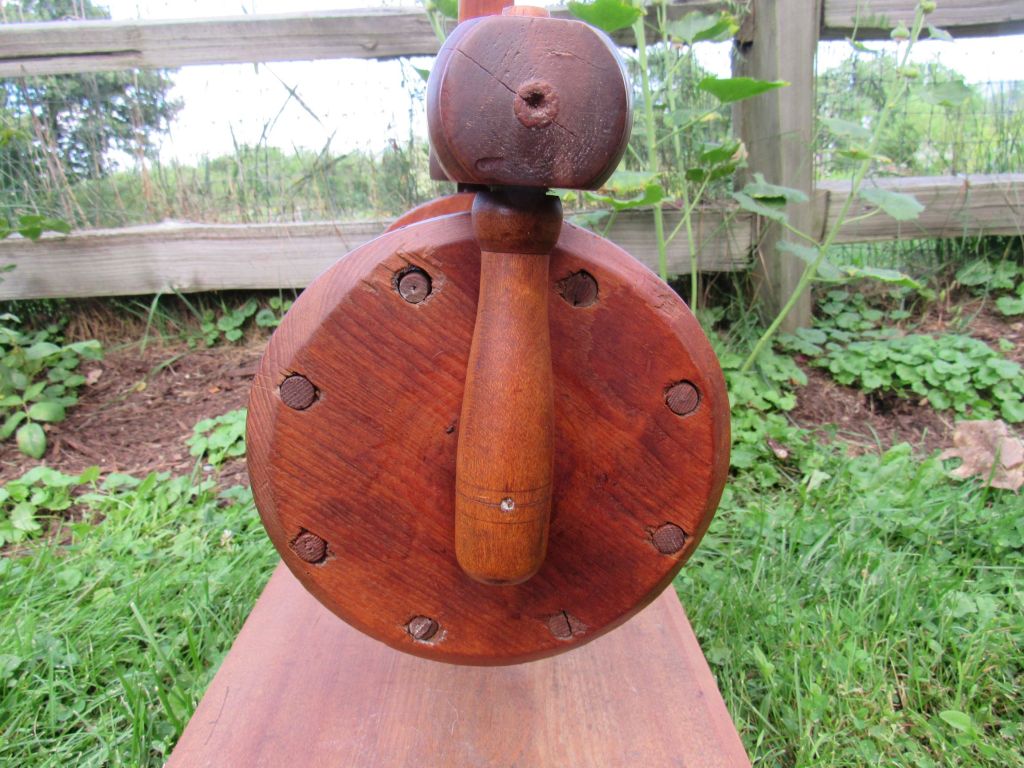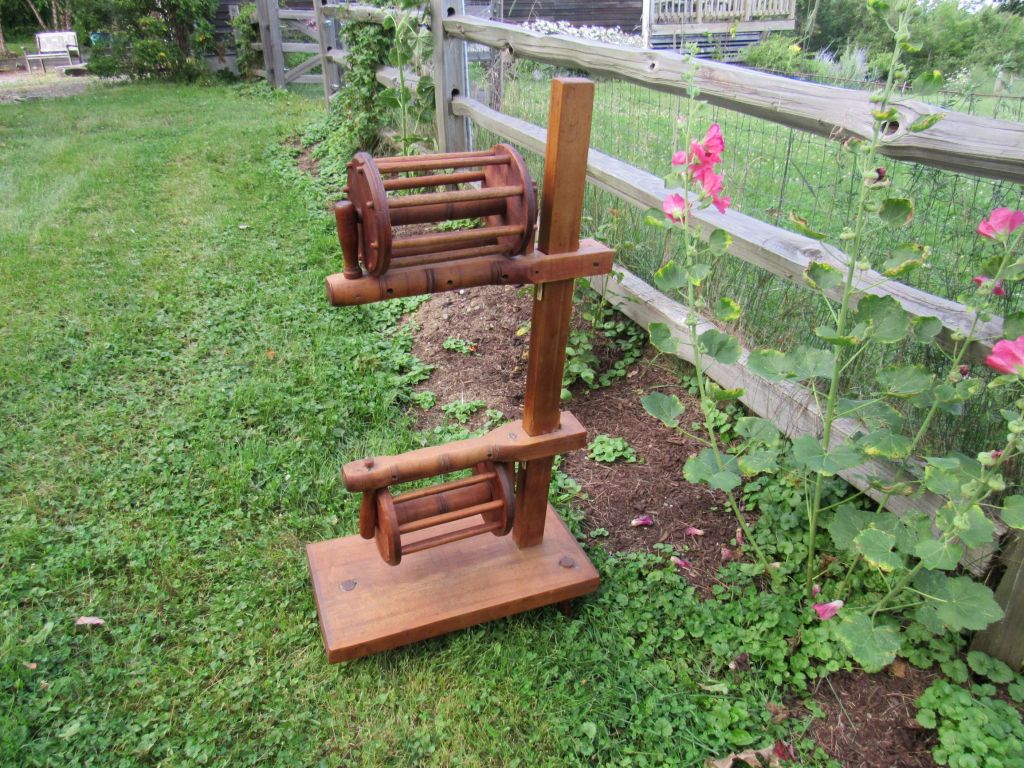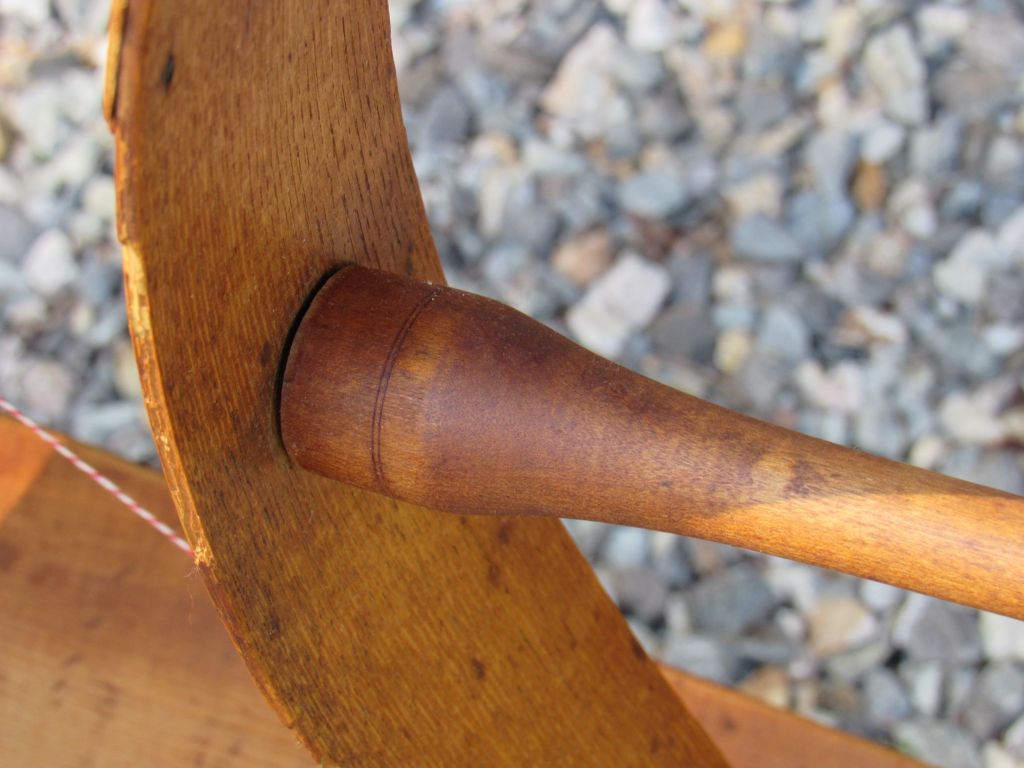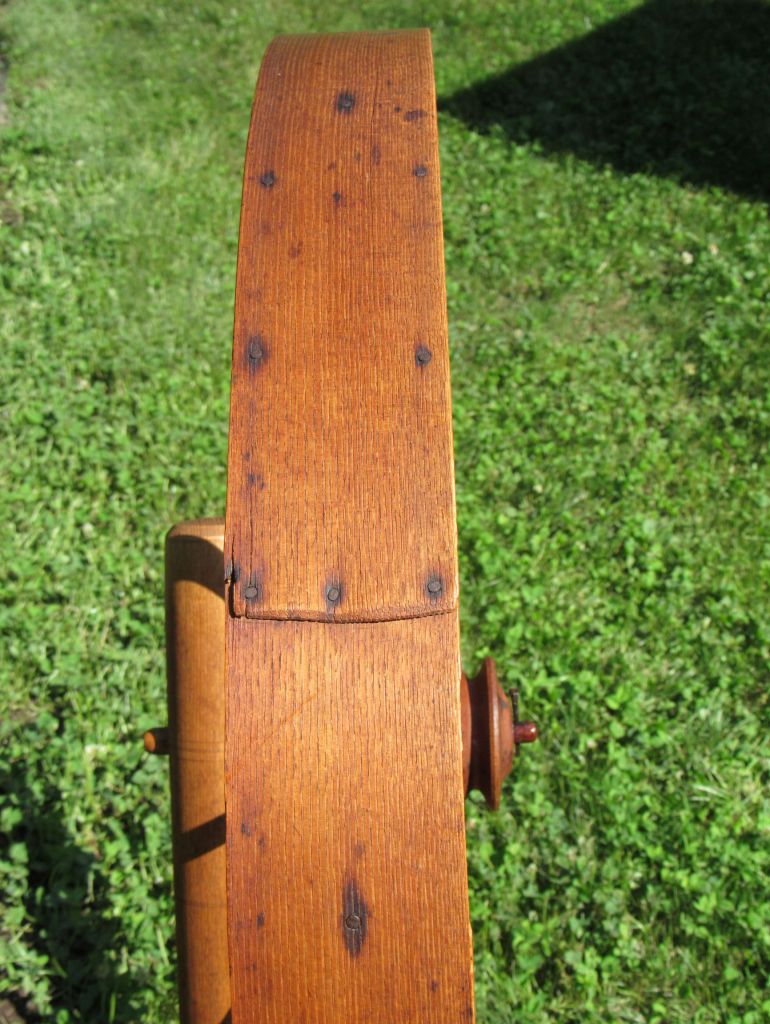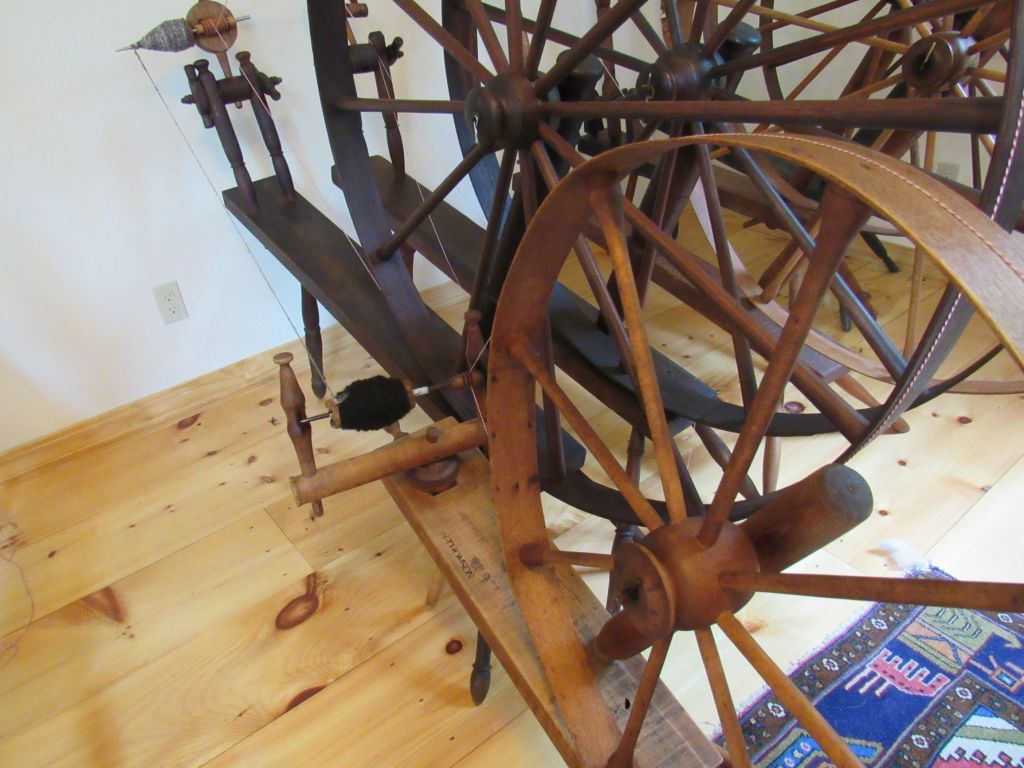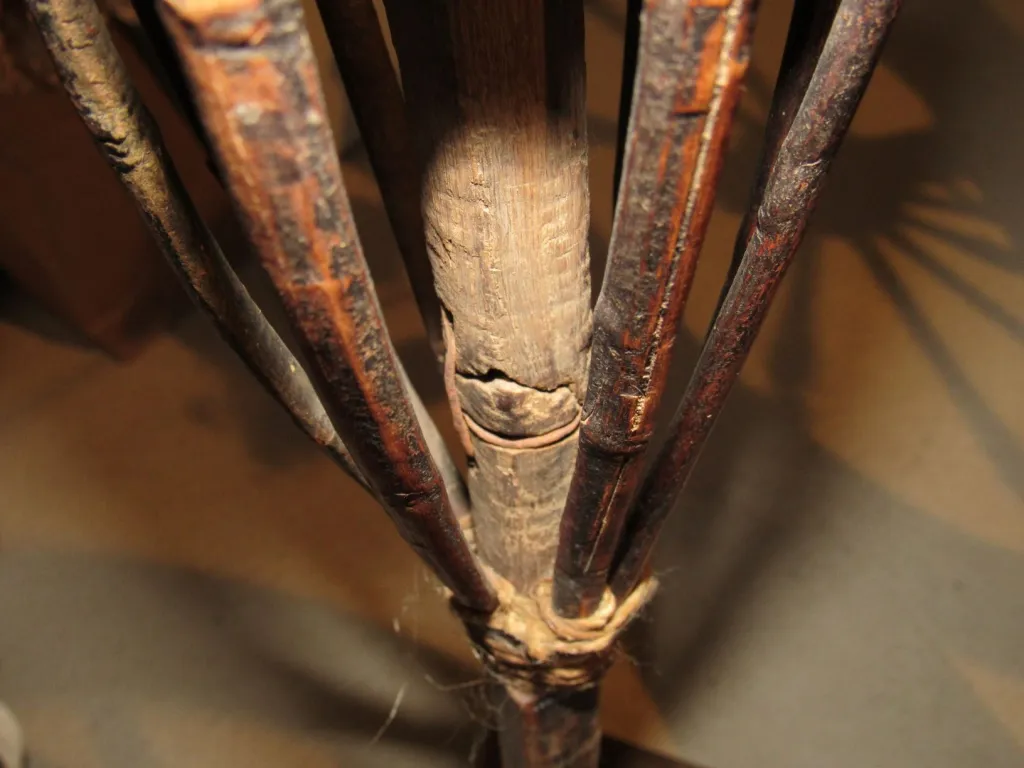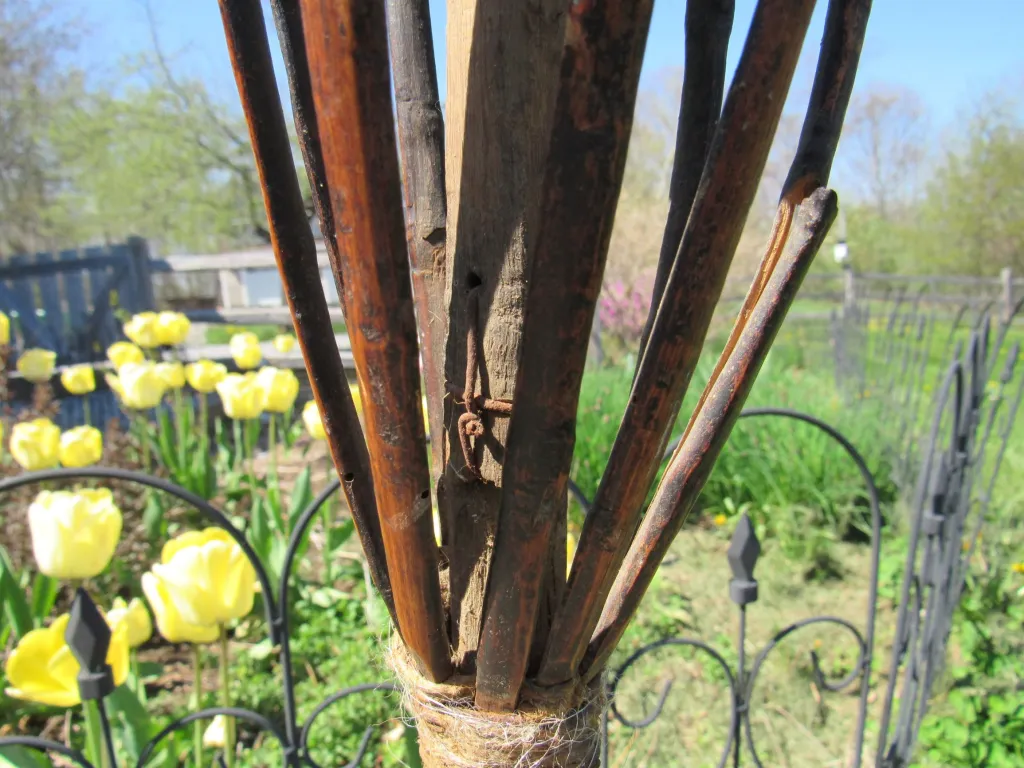
Despite a lot of research, I have not been able to identify the elusive J. Platt.

It seems pretty certain that he was a Connecticut wheel maker working in the late 18th and early 19th century. His wheels share characteristics with those made by a group of wheel makers in Fairfield and Litchfield counties, including the Sanfords, the Sturdevants, and Silas Barnum. Those wheel makers, and various branches of Platts, were connected with a web of marriages through several generations.

Surely, J. Platt fits in with them somehow, but just how remains a mystery. For those interested in more details of my Platt research, I am including a reference below to my article in the Spinning Wheel Sleuth. In short, there are several candidates, but each possibility lacks that final bit of evidence to put the hunt over the top from theory to probability.

I have already written two posts in this blog about J. Platt wheels. “Katherine the Witch,” my first wheel, continues to be my workhorse for flax spinning. “Mercy,” a lovely great wheel, bears a striking resemblance to Silas Barnum’s work. I never really expected to find any more Platt wheels, so was gobsmacked when a marked bobbin winder turned up in Maryland.

Bobbin winders are rarely marked, so I could not believe my luck. And, as it turns out, there was a lot of luck involved. When I contacted the seller, he said that he would have to see if he still had it because he thought he had thrown it out. My heart dropped. Apparently, he cruises estate sales and auctions for things to resell on-line.

He had been given two bobbin winders at an estate sale and, having no idea what they were, threw them into a storage unit. When he needed more room, he decided to throw them out. Fortunately, his wife convinced him to save the one with the name on it and to try to sell it. I shudder to think how close this winder came to oblivion.

Instead, it was rescued, named Judith, and joined my family of Platt wheels. Although it could be over two hundred years old, it now works regularly, doing what it was intended to do.

Bobbin winders, such as this one, were used by weavers to wind bobbins (or spools). Once wound, the bobbins were mounted on a skarne (also called a spool rack or creel), which allowed for efficient warp winding, with multiple threads wound on the warping rods or mill at the same time. This marvelous photo of a Quebec woman shows her bobbin winder being filled from a skein on a swift and the bobbins mounted on a skarne from which she draws eight warp threads at once to wind on to her huge warping mill.

Unfortunately, when this photo was made into a postcard, it was inaccurately labeled “Habitant Carding Wool.”

In contrast with the Quebec winder in the photo, J. Platt’s has a flat rim

and a box for the spindle. Box-style winders are often found in New England. I was fascinated to see a similar winder on a 1792 Conder token from Norwich, England, a town famous for its handweavers who produced the beautiful silk and wool Norwich shawls.

Platt’s bobbin winder could have been made around the same time.

The box is convenient for holding empty (or full) bobbins.

Some boxes have supports for the spindle ends, but many, like Platt’s, are just plain wood with gouges made for the spindle tips through use.

This bobbin winder did not have a spindle when I got it, but I found one to fit.

I have not used it yet for winding bobbins for weaving, but regularly use it to wind singles off my wheels onto extra bobbins for plying.

These winders were also used to fill bobbins for weaving shuttles. Perhaps there were spindles of different diameters or lengths to accommodate the smaller bobbins used in shuttles, which might explain why there is a wide variety of depth and placement of holes in the box ends.

The winder looks a lot like a miniature Platt great wheel, with similar turnings.


Unlike Platt’s wheels, however, it has scalloped carvings on the table ends.

The inside of the box and the table are covered with indentations, perhaps from tapping the spindle end to loosen the bobbin for removal.

The axle is wooden, with a broken end when I got it.

My husband made a beautiful repair.

The inside of the hub is just smooth wood, with no sign of a metal or leather bearing.

The legs have incised rings, rather than the dark burned-on rings of Platt’s flax wheel and winders.


There is an interesting corner piece nailed in next to the box. I do not know if there is a functional reason for it, but it looks nice.
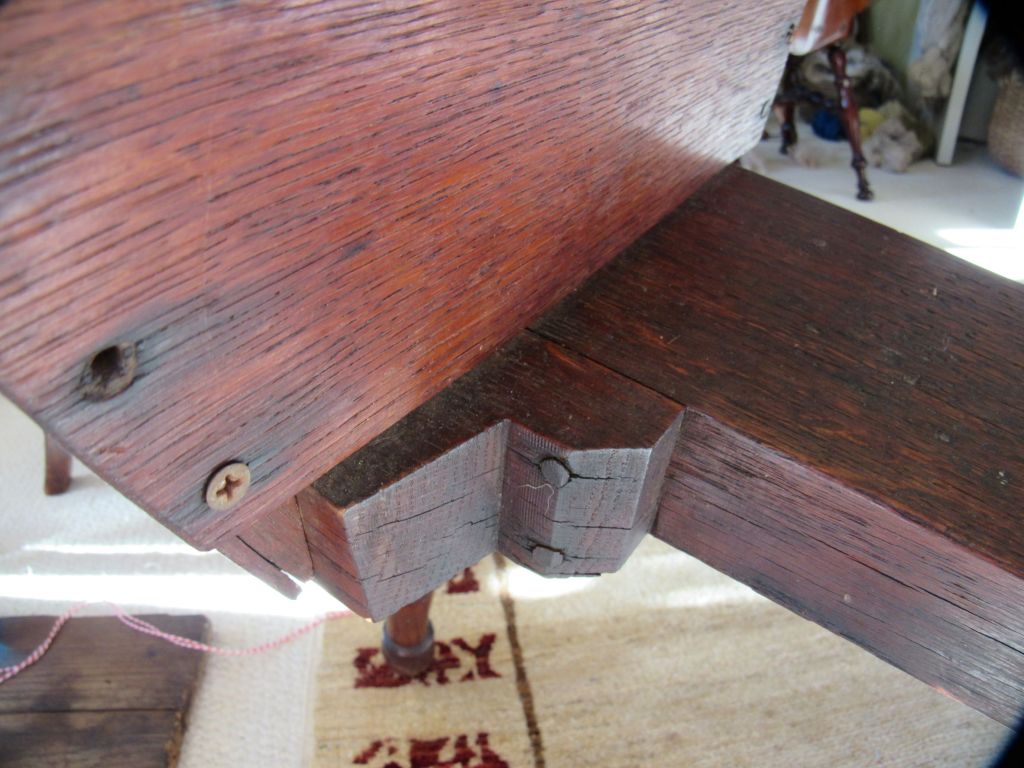
While I had never expected to find a Platt bobbin winder, I had been keeping my eye out for a Platt reel. When one appeared in Vermont, I jumped on it and, with the help of several people, got it to Maine.

The reel, named Prudence, has six arms and a slanted table—an unusual feature found on some Connecticut reels. (see Pennington & Taylor, p. 161, Fig 14-6). I am not sure of the reason for the slant, perhaps for ease of storage or some particular positioning for winding off from a wheel. It certainly makes for a very stable reel.
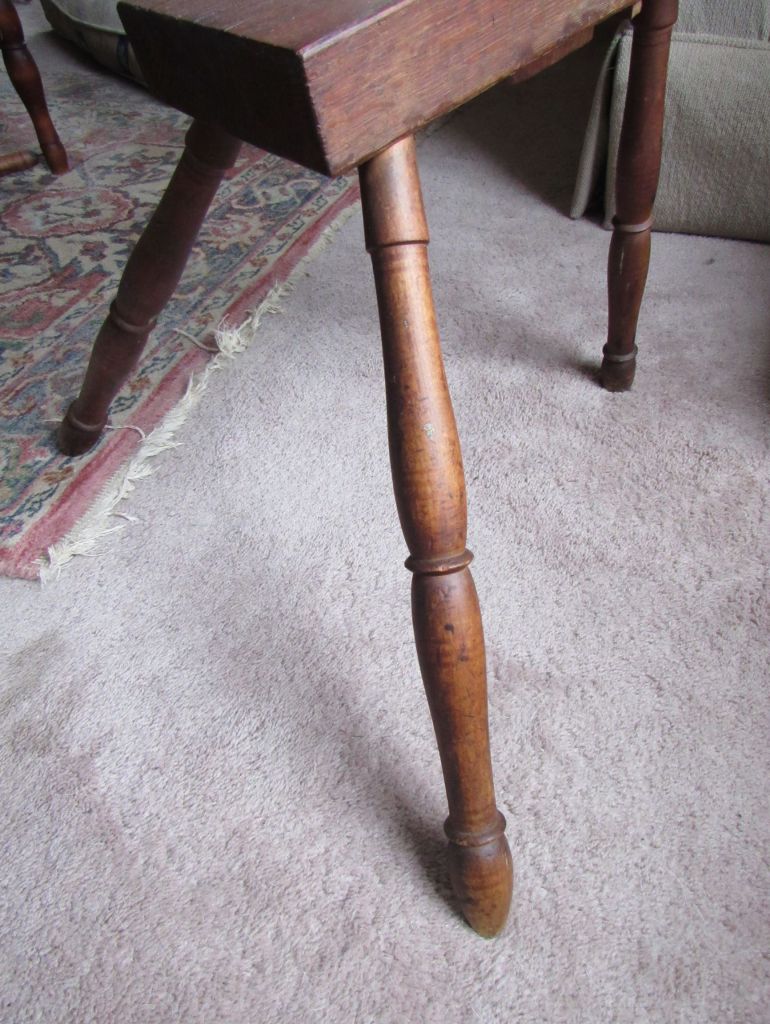
The legs and winder arms have faint traces of dark rings and the legs are, in general, similar to those on Platt’s flax wheel.

But neither the table nor the legs are the same sizes as those on the wheel.

The top, which has a broken edge, is flat, without any knob for carrying.


It holds a two-yard skein and the arms, like the top, are plain, without a handle for turning.

A simple clock hand on one side of the gear box measures rotations. While the reel arms turn clockwise, the clock hand turns counter-clockwise.

The other side of the gear box is unadorned.

The gears run smoothly and the click mechanism still works beautifully, making its “thwack” every forty rotations.

The wooden clicker being pulled by the metal pin on the gear before the click
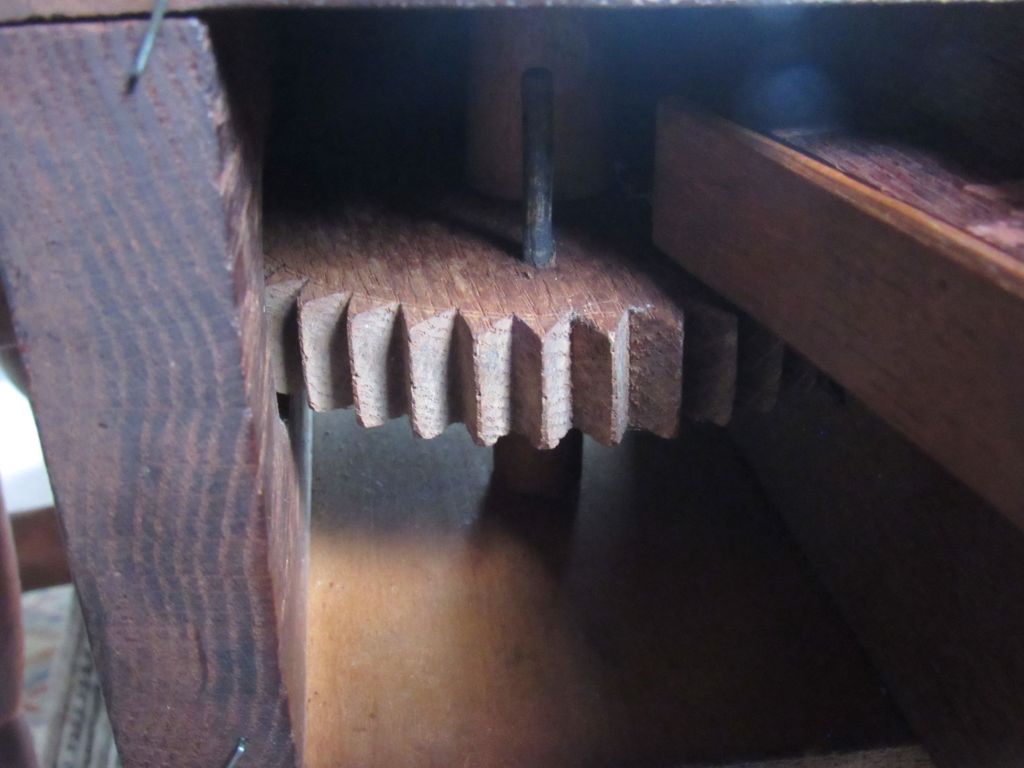
After the click–the metal pin that triggers the click
The hub is pegged on the axle and nicely turned.

The arm crosspieces have lips on the ends, except for one, “the stranger,” which has one smooth end to allow for removal of the skein.

After I got the wheel home and cleaned up, I sent photos of it to another Platt enthusiast, Cindy Lincoln, in Massachusetts. She has been restoring a Platt winder and used this one as a model. In return, she sent me some photos from Ron Walter in Pennsylvania of a John Sturdevant reel in his collection.
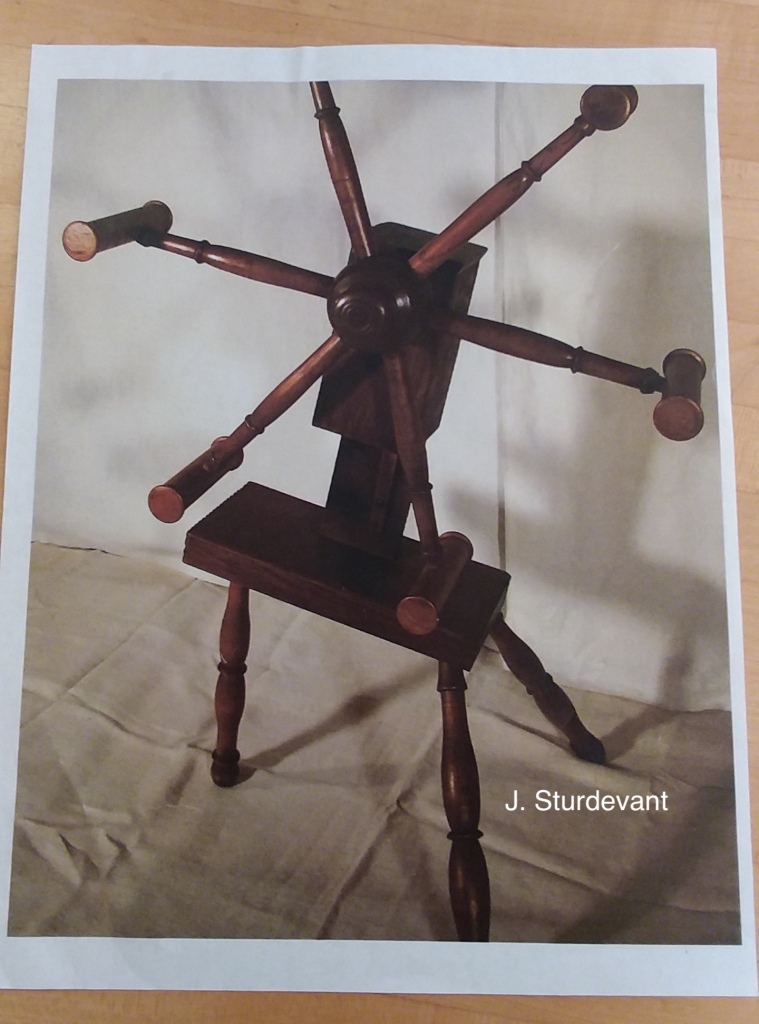
The Platt and Sturdevant winders are remarkably similar, with the tilted bench, and lack of carrying knob and winding handle. It gives another possible clue into the identity of J. Platt. I now will be digging deep into Platt and Sturdevant connections.

Although we still do not know J. Platt’s identity, as far as I know, he is the only Connecticut wheel maker from whom we have marked examples of all of the five major spinning tools.

We know of several marked great wheels and reels, at least two marked single-flyer flax wheels, one marked double-flyer wheel, and my one bobbin winder. Quite a legacy. I am hoping one day to find a Platt double-flyer wheel for a Platt full house.

Thanks to Cindy Lincoln and Ron Walter for the Sturdevant reel photographs, to Tina M. for finding, picking up, and railroading the bobbin winder, to Jessie R. for finding and picking up the reel, to Nora R., Andrea M. and Amy T. for the reel railroad, and to Jan C. for the spindle.
For more information see:
Page, Brenda, “The Search for J. Platt,” The Spinning Wheel Sleuth, Issue #113, July 2021, pp. 1-6.
Pennington, David A. and Michael B. Taylor. Spinning Wheels and Accessories. Atglen, PA: Schiffer Publishing, Ltd., 2004, p, 161.

























